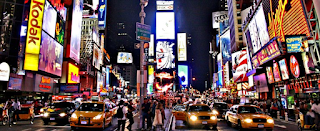Now there are frequent news stories in various media outlets relating to Yellowstone Caldera. This geological object is a volcanic caldera in Yellowstone National Park in the northwestern United States. The site is often referred to as a supervolcano. In the 1960s and 1970s, scientists determined the size of the caldera. It is 55*72 km, which is about a third of the territory of the national park of the same name. The region itself is located above the so-called hot spot. Here the molten rock of the mantle moves towards the surface.
There have been eruptions here before. Thus, in the same 60's of last century, scientists discovered the ruins of an ancient crater. Nowadays there is a huge bubble of red-hot magma under it, and the depth of the bubble is more than 8 kilometers. At the moment we know about three eruptions of Yellowstone volcano, which have repeatedly led to natural disasters, the nature of which is close to a nuclear winter. Scientists believe that if something similar happens in our time, it could provoke a global catastrophe - not only natural, but also social.
The last time a volcano erupted was 70,000 years ago, and few people want it to happen today. Unfortunately, it is difficult to say when an eruption will occur. Many media outlets speculate on this, but in the case of Yellowstone, scientists say that the explosion will not happen in the lifetime of people currently living. Nevertheless, the threat is significant, and NASA proposes to begin work to eliminate it now. Currently, the supervolcano is not erupting because Yellowstone has a natural mechanism for cooling the magma. In the caldera, 70% of the magma bubble's energy is taken away by the process of heating the surrounding rocks, from which the water takes away the excess temperature. Geysers are the external manifestation of this process. Another 30% is spent on the gradual melting of the rocks. Just melting is dangerous - it leads to a new eruption. Some experts believe that the question should be asked not "Will there be an eruption?" but "When will it happen?
When the supervolcano wakes up, it will destroy most of the territory of the national park (which is the least of the disasters), lava will spill (also not too bad, it is a local phenomenon) and a huge amount of ash and gases will be released into the atmosphere. This is already a serious problem, since the region is agricultural, after the eruption the ash will cover the region with a diameter of 800 kilometers, if not more. The thickness of the "precipitation" in this case will be about 4 cm, which will not allow any agricultural activity. The ash that will enter the atmosphere will reduce the amount of solar radiation reaching the Earth. As a result, there will be climatic changes - and this does not only concern the United States.
Acid rain will fall regularly all over the planet, but most of them will be in the U.S..
So what is NASA going to do? The agency plans to drill two wells on the sides of the caldera, outside the national park. It is dangerous to drill closer to the center, as this could provoke an eruption. But along the edges, scientists say, you can drill without a problem. One of the wells will be pressurized to supply water, which, when heated, will begin to flow out of the opposite well.
According to the scientists, if enough water is allowed to flow through the volcano, it will allow the magma near the surface to cool slightly. Well, the steam bursting out of the other well (its temperature will reach about 350 degrees Celsius) can be used for a good cause - to generate electricity.
According to NASA representatives, this project should arouse the interest of energy companies that deal with geothermal systems. In this case, however, drilling will have to be a little deeper than usual, but still, such a task is quite feasible for modern companies. The short-term goal is to generate energy that can be supplied to hundreds or even thousands of local households. The long-term goal is to prevent an eruption that will affect all of humanity.
Unfortunately, this plan requires more than $3 billion. $3.6 billion to be exact. It would take thousands of years for the volcano to cool down. But the locals will be able to get inexpensive electricity the whole time. NASA doesn't have three billion dollars to spare, because its budget has already been cut. But if energy companies are interested in the idea, it can be implemented. At least, to try.
Nevertheless, this place is suitable for real extreme people. But we ask you to be very careful!














No comments:
Post a Comment